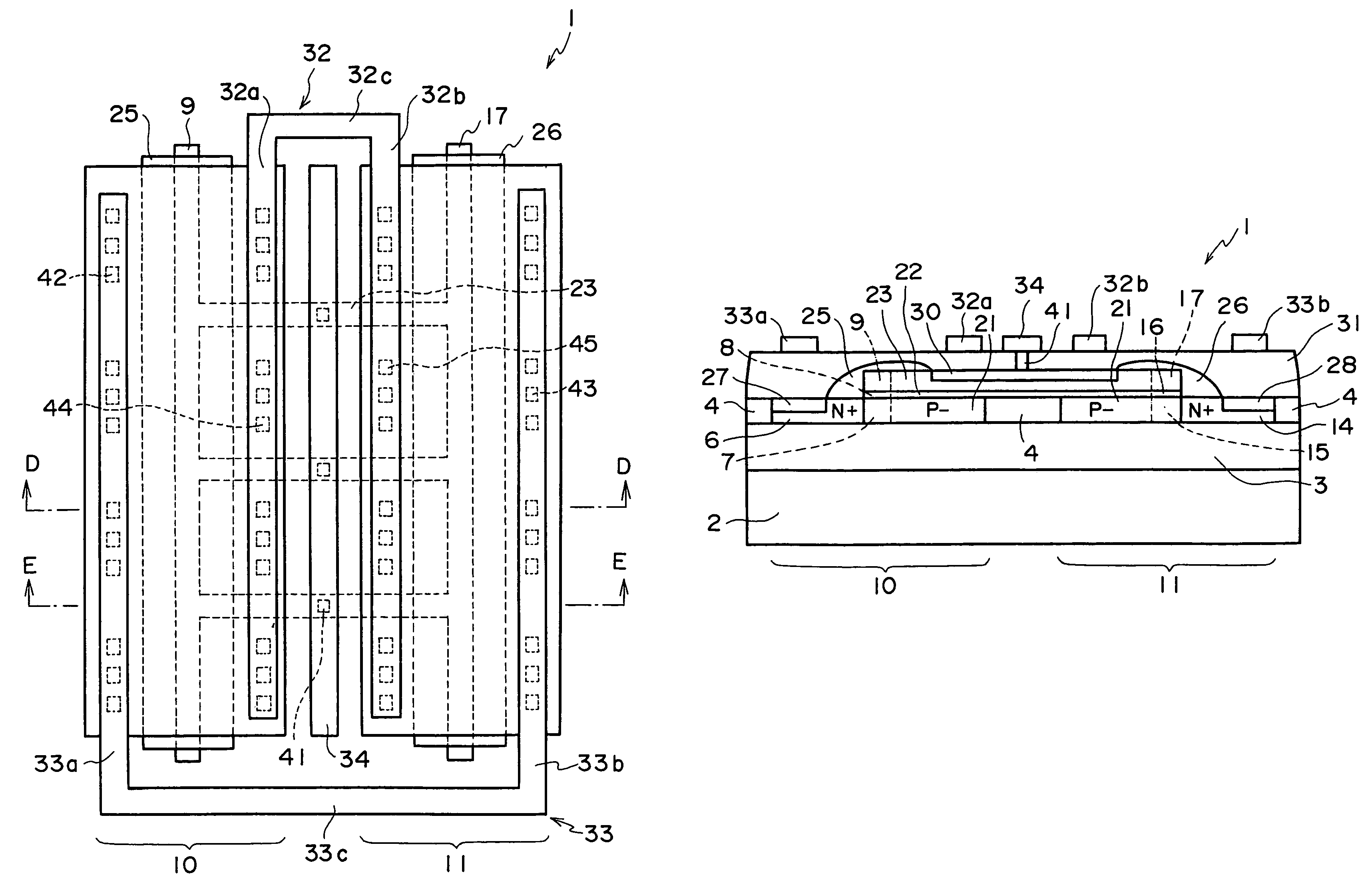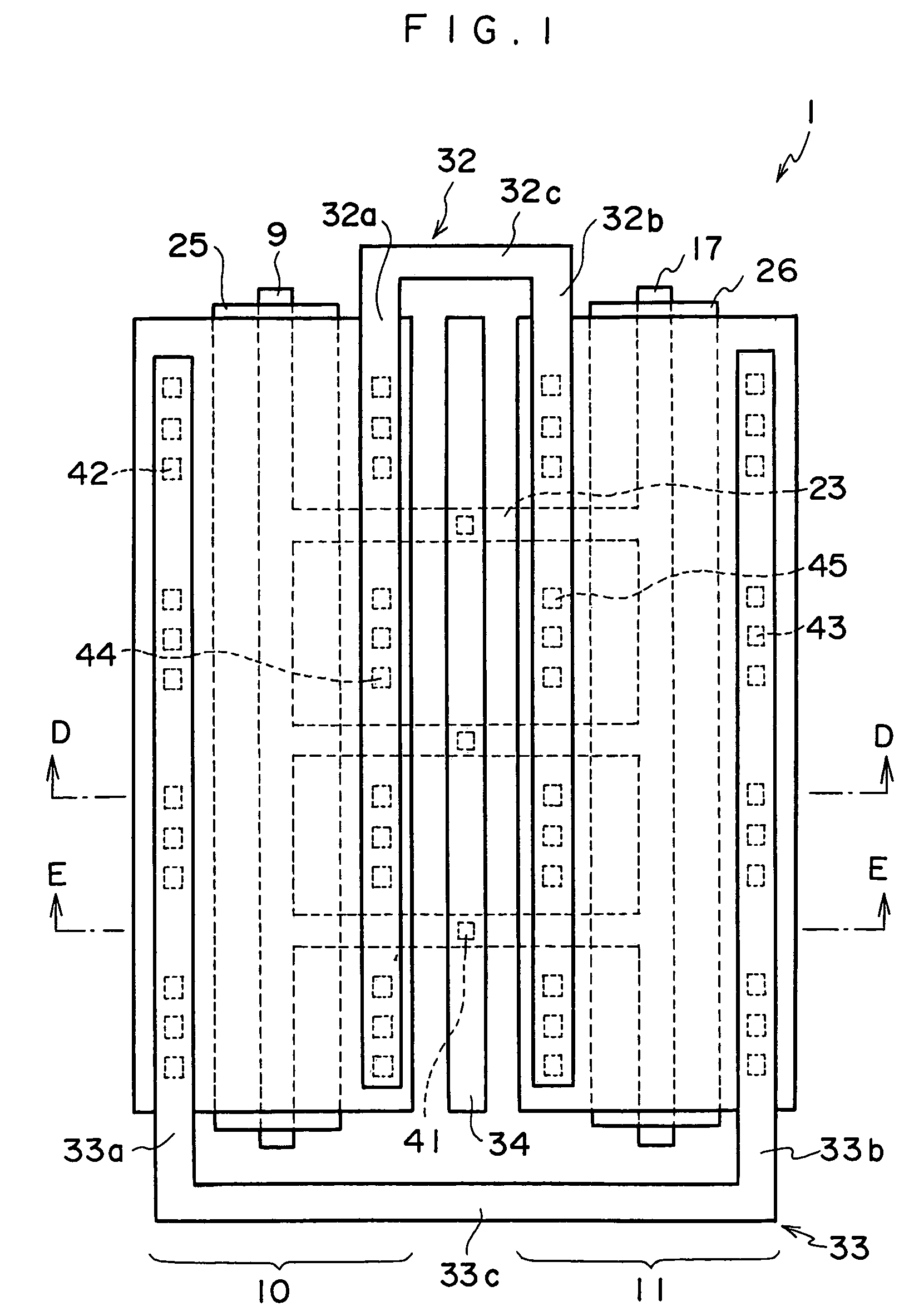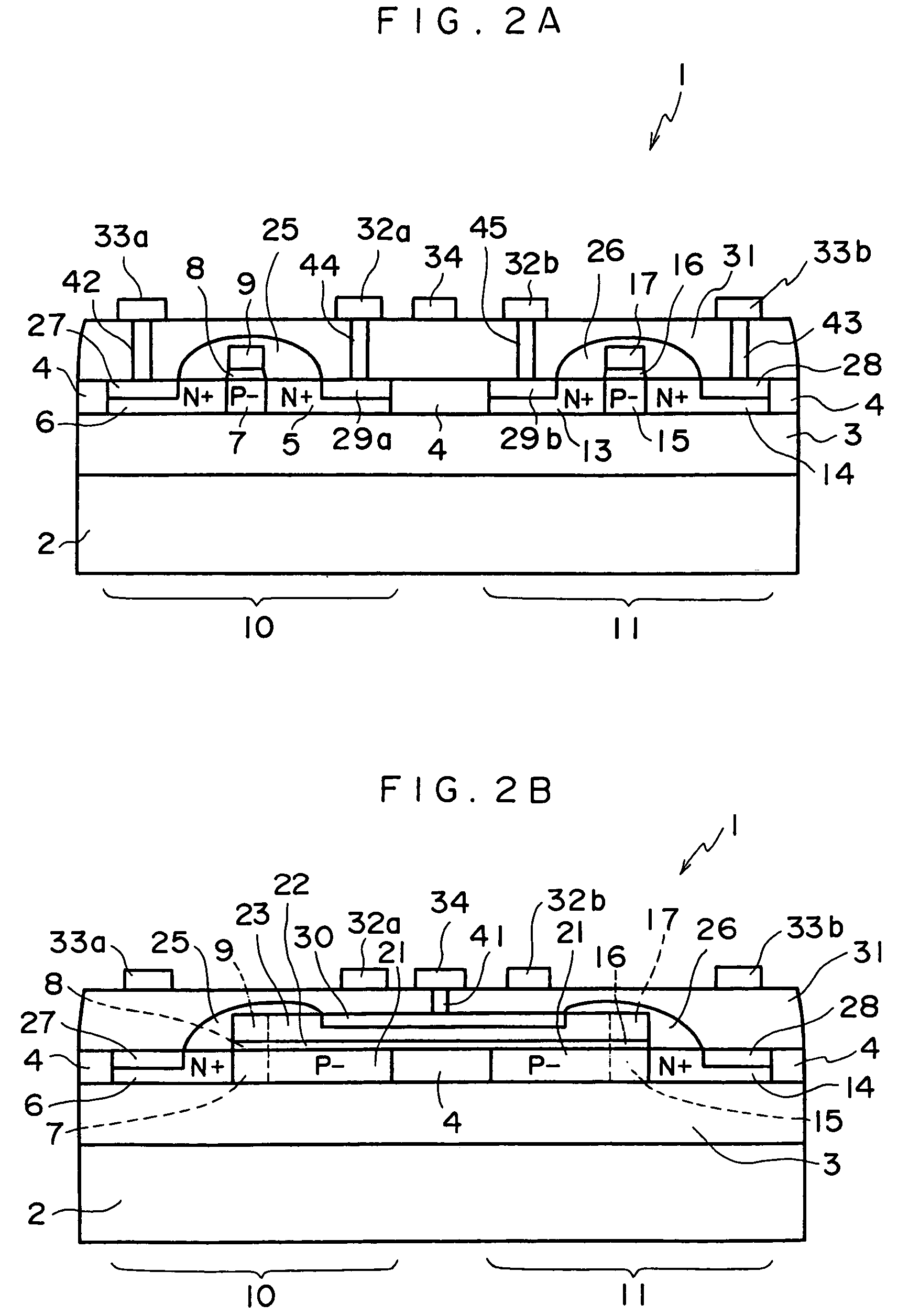Semiconductor device including first and second transistor groups and semiconductor integrated circuit device
a semiconductor integrated circuit and semiconductor technology, applied in semiconductor devices, semiconductor/solid-state device details, electrical apparatus, etc., can solve the problems of complicated structure and complicate layout design, and achieve excellent electrostatic discharge (esd) resistance, suppress the increase in gate delay time, and facilitate layout design
- Summary
- Abstract
- Description
- Claims
- Application Information
AI Technical Summary
Benefits of technology
Problems solved by technology
Method used
Image
Examples
first embodiment
[0048]FIG. 1 is a plan view showing a salicide block NMOS transistor 1 forming a semiconductor device according to a first embodiment of the invention, FIG. 2A is a sectional view taken along line D—D in FIG. 1, and FIG. 2B is a sectional view taken along line E—E in FIG. 1.
[0049]As shown in these drawings, this semiconductor device includes a semiconductor substrate such as a P silicon substrate 2, a buried oxide film 3 formed on the substrate 2, and two thin silicon layers 10 and 11 formed on the oxide film 3, which are isolated from each other by a field oxide layer 4 serving as an element isolation layer.
[0050]In the example shown, the thin silicon layers 10 and 11 forming active regions are respectively formed in a longitudinally (in FIG. 1) elongated rectangular shape, and are arranged in parallel with and adjacent to each other.
[0051]In the thin silicon layer 10, a first N+ diffusion region 5 and a second N+ diffusion region 6 are formed by impurity diffusion, and a longitudi...
second embodiment
[0073]FIG. 3 is a plan view showing a structure of a salicide block NMOS transistor 51 forming a semiconductor device according to a second embodiment of the invention, FIG. 4A is a sectional view taken along line F—F in FIG. 3, and FIG. 4B is a sectional view taken along line G—G in FIG. 3. In the following description of the salicide block NMOS transistor 51 according to the second embodiment, elements which are common with those of the above-described salicide block NMOS transistor 1 of the first embodiment are designated by the same reference numerals and are not described in detail. Only differences between the first and the second embodiments are described in detail.
[0074]Main differences between the salicide block NMOS transistor 51 of the second embodiment and the above-described salicide block NMOS transistor 1 of the first embodiment shown in FIG. 1 lie in that no field oxide film layer 4 (see FIGS. 2A and 2B) for element isolation is provided, and a wiring portion 54 made...
third embodiment
[0090]FIG. 9 is a sectional view showing a structure of a salicide block NMOS transistor 71 according to a third embodiment based on the semiconductor device of the invention.
[0091]The salicide block NMOS transistor 71 is formed of two NMOS transistors, which are formed by a MOS process on a bulk substrate including a P-well 73 formed on a P-semiconductor substrate 72, in parallel with each other and isolated by element isolation oxide films 74, 75 and 76. This salicide block NMOS transistor 71 is equivalent to the above-described salicide block NMOS transistor 1 shown in FIGS. 1, 2A and 2B, where the SOI substrate of the salicide block NMOS transistor 1 is replaced with the bulk substrate.
[0092]Therefore, elements of the salicide block NMOS transistor 71 which are common with those of the salicide block NMOS transistor 1 of the first embodiment are designated by the same reference numerals or not shown in the drawings and are not described in detail. Only differences between the fi...
PUM
 Login to View More
Login to View More Abstract
Description
Claims
Application Information
 Login to View More
Login to View More - R&D
- Intellectual Property
- Life Sciences
- Materials
- Tech Scout
- Unparalleled Data Quality
- Higher Quality Content
- 60% Fewer Hallucinations
Browse by: Latest US Patents, China's latest patents, Technical Efficacy Thesaurus, Application Domain, Technology Topic, Popular Technical Reports.
© 2025 PatSnap. All rights reserved.Legal|Privacy policy|Modern Slavery Act Transparency Statement|Sitemap|About US| Contact US: help@patsnap.com



